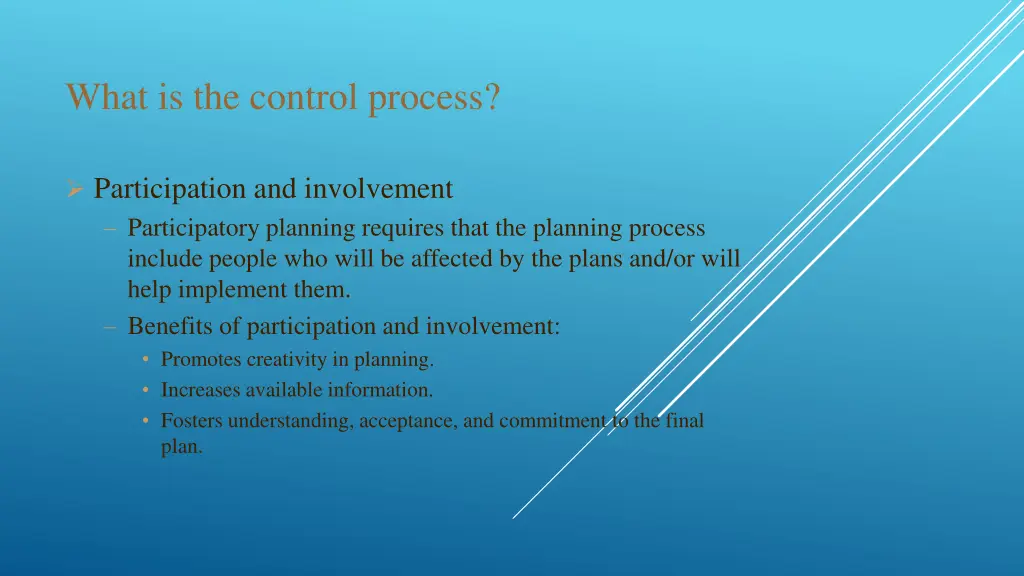
Understanding the Control Process for Effective Planning
Participatory planning involves active involvement of stakeholders for better outcomes. The control process consists of steps like establishing objectives, measuring performance, comparing results, and taking corrective actions. It aims to ensure desired outcomes are achieved through effective management strategies.
Download Presentation

Please find below an Image/Link to download the presentation.
The content on the website is provided AS IS for your information and personal use only. It may not be sold, licensed, or shared on other websites without obtaining consent from the author. If you encounter any issues during the download, it is possible that the publisher has removed the file from their server.
You are allowed to download the files provided on this website for personal or commercial use, subject to the condition that they are used lawfully. All files are the property of their respective owners.
The content on the website is provided AS IS for your information and personal use only. It may not be sold, licensed, or shared on other websites without obtaining consent from the author.
E N D
Presentation Transcript
What is the control process? Participation and involvement Participatory planning requires that the planning process include people who will be affected by the plans and/or will help implement them. Benefits of participation and involvement: Promotes creativity in planning. Increases available information. Fosters understanding, acceptance, and commitment to the final plan.
What is the control process? Steps in the control process Step 1 establish objectives and standards Step 2 measure actual performance Step 3 compare results with objectives and standards Step 4 take corrective action as needed
What is the control process? Step 1 establishing objectives and standards Output standards Measure performance results in terms of quantity, quality, cost, or time. Input standards Measure effort in terms of amount of work expended in task performance.
What is the control process? Step 2 measuring actual performance Goal is accurate measurement of actual results on output and/or input standards. Effective control requires measurement.
What is the control process? Step 3 comparing results with objectives and standards Control equation Need for action reflects the difference between desired performance and actual performance
What is the control process? Step 3 comparing results with objectives and standards Methods of comparing desired and actual performance Historical comparison Relative comparison Engineering comparison Benchmarking using different comparison methods
What is the control process? Step 4 taking corrective action Taking action when a discrepancy exists between desired and actual performance. Management by exception Giving priority attention to situations showing the greatest need for action. Types of exceptions Problem situation Opportunity situation






















